-
 Bitcoin
Bitcoin $118400
0.47% -
 Ethereum
Ethereum $3836
2.20% -
 XRP
XRP $3.157
2.98% -
 Tether USDt
Tether USDt $0.9999
-0.03% -
 BNB
BNB $801.5
1.31% -
 Solana
Solana $180.9
2.07% -
 USDC
USDC $0.9999
-0.02% -
 Dogecoin
Dogecoin $0.2225
2.50% -
 TRON
TRON $0.3285
-1.02% -
 Cardano
Cardano $0.7789
2.60% -
 Hyperliquid
Hyperliquid $43.60
2.39% -
 Sui
Sui $3.892
4.41% -
 Stellar
Stellar $0.4229
3.34% -
 Chainlink
Chainlink $18.01
3.98% -
 Hedera
Hedera $0.2745
6.77% -
 Bitcoin Cash
Bitcoin Cash $582.3
3.38% -
 Avalanche
Avalanche $23.77
1.04% -
 Ethena USDe
Ethena USDe $1.001
0.01% -
 Toncoin
Toncoin $3.493
3.59% -
 Litecoin
Litecoin $110.0
2.48% -
 UNUS SED LEO
UNUS SED LEO $8.936
-0.37% -
 Shiba Inu
Shiba Inu $0.00001304
2.49% -
 Uniswap
Uniswap $9.999
1.09% -
 Polkadot
Polkadot $3.897
3.26% -
 Monero
Monero $308.6
-0.83% -
 Dai
Dai $0.9999
-0.01% -
 Bitget Token
Bitget Token $4.504
-0.04% -
 Pepe
Pepe $0.00001154
2.95% -
 Cronos
Cronos $0.1471
3.06% -
 Ethena
Ethena $0.6691
19.53%
How to arrange the monthly W bottom formation + weekly MACD turning red + daily gap breakthrough?
A confirmed monthly W bottom, weekly MACD turning red, and daily gap-up breakout signal a high-probability bullish reversal, especially when aligned across timeframes.
Jul 30, 2025 at 06:01 am
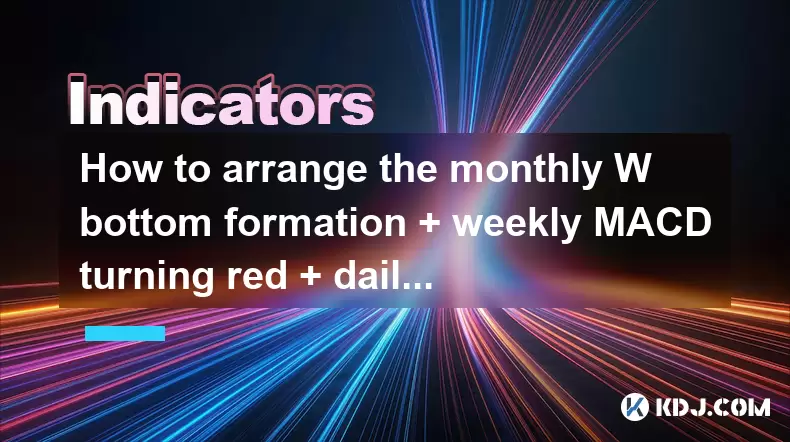
Understanding the W Bottom Formation in Monthly Charts
The W bottom formation is a reversal pattern that typically appears after a prolonged downtrend, signaling a potential shift from bearish to bullish momentum. On a monthly chart, this pattern carries significant weight due to the longer time frame, which filters out short-term noise. The structure consists of two distinct lows at approximately the same price level, separated by a rebound that forms the middle peak—resembling the letter "W". The confirmation of the pattern occurs when price breaks above the resistance level formed by the peak between the two lows.
For traders analyzing monthly charts, identifying this formation requires patience. Each candle represents an entire month, so confirmation may take several months. To validate the W bottom, traders should observe volume patterns—ideally, volume should decline during the second low and surge during the breakout. This indicates weakening selling pressure and renewed buyer interest. The ideal entry point is after the monthly close above the neckline, which is the highest point between the two bottoms.
Interpreting Weekly MACD Turning Red
The MACD (Moving Average Convergence Divergence) indicator is a momentum oscillator that helps identify trend direction and strength. When the MACD line crosses above the signal line on a weekly chart, the histogram turns red, indicating bullish momentum. This shift is especially meaningful when it occurs after a prolonged bearish phase and aligns with other reversal signals.
To apply this correctly, traders should monitor the MACD settings—typically (12, 26, 9). A red histogram means the MACD line is above the signal line, reflecting increasing upward momentum. When this happens on a weekly basis, it suggests that bullish energy is building across a broader time horizon. It's crucial to wait for the full weekly candle to close with the red histogram to avoid false signals from intra-week fluctuations. Combining this with the monthly W bottom increases the reliability, as both time frames are signaling a potential trend reversal.
Analyzing Daily Gap Breakthrough Patterns
A gap breakthrough on the daily chart occurs when the opening price of a new trading day is significantly higher than the previous day’s closing price, leaving a visible "gap" on the chart. This often happens after positive news, strong volume, or a breakout from a consolidation zone. In the context of a broader reversal setup, a gap up can act as a powerful confirmation signal.
To identify a valid gap breakthrough:
- Ensure the gap is above a key resistance level or the previous day’s high.
- Confirm it is accompanied by high trading volume, which validates institutional participation.
- Check that the gap remains unfilled during the trading session, indicating sustained buying pressure.
- Avoid gaps caused by dividends or splits; focus on breakout gaps related to price action.
When this daily gap occurs after the formation of a monthly W bottom and a weekly MACD turning red, it suggests that short-term momentum is aligning with medium and long-term reversal signals. Traders should consider entering long positions after the first daily close above the gap, ensuring the price does not retreat into the gap zone.
Integrating the Three Signals: A Step-by-Step Approach
To effectively combine the monthly W bottom, weekly MACD turning red, and daily gap breakthrough, traders must follow a structured process across multiple time frames:
- Confirm the monthly W bottom by identifying two comparable lows and a completed breakout above the neckline with a monthly close.
- Monitor the weekly MACD for a crossover where the MACD line moves above the signal line, resulting in a red histogram; ensure this occurs after the monthly breakout.
- Scan daily charts for a gap up opening that exceeds the prior day’s high and remains open by the close.
- Verify volume on the gap day is at least 1.5 times the 30-day average to confirm institutional involvement.
- Wait for the daily candle to close above the gap before considering entry.
- Set a stop-loss just below the gap or the recent swing low to manage risk.
- Use position sizing to allocate capital only after all three conditions are met.
This multi-timeframe alignment reduces false signals and increases the probability of a sustainable upward move.
Practical Example Using a Cryptocurrency Chart
Consider a scenario with Bitcoin (BTC) in a prolonged bear market. Over the past year, BTC forms two major lows at $25,000 on the monthly chart, with a rebound to $30,000 in between. In the most recent month, BTC closes at $31,000, breaking above the $30,000 neckline—confirming the monthly W bottom.
On the weekly chart, the MACD line, which had been below the signal line for months, crosses above it, and the histogram turns red. This occurs in the same week as the monthly breakout, reinforcing the bullish signal.
The following week, BTC opens at $32,500, gapping up from the previous close of $31,200. The gap remains open throughout the day, and volume spikes to 2.1 times the average. The daily candle closes at $33,000. This daily gap breakthrough aligns with the higher time frame signals, creating a high-conviction long setup.
Risk Management and Trade Execution
Even with strong confluence, risk cannot be ignored. Traders should:
- Limit exposure to no more than 2-5% of total portfolio per trade.
- Place stop-loss orders below the gap low or the second bottom of the W formation, depending on volatility.
- Avoid entering before confirmation—waiting for the daily close prevents premature entries.
- Use trailing stops after the trade moves favorably to lock in profits.
- Monitor on-chain data and market sentiment to detect any divergence from technical signals.
This disciplined approach ensures that the strategy remains robust even in volatile crypto markets.
Frequently Asked Questions
What if the daily gap gets filled within a few days?
If the gap is filled quickly, it suggests weak follow-through. This may invalidate the breakthrough signal, especially if volume drops. Traders should consider exiting or reducing position size if the price re-enters the gap zone and fails to reclaim it within two days.
Can this strategy be applied to altcoins?
Yes, but with caution. Altcoins are more volatile and prone to manipulation. Ensure the altcoin has sufficient liquidity and trading volume. Also, verify that the monthly and weekly patterns are not distorted by low activity during certain periods.
How do I adjust this strategy during high market volatility?
During high volatility, widen stop-loss levels slightly to avoid being stopped out by noise. Focus on assets with strong fundamentals and on-chain activity. Consider waiting for multiple confirmations, such as on-chain accumulation or exchange outflows, to support the technical setup.
Is it necessary for all three signals to occur in the same week?
No. The signals can occur over several weeks. The monthly W bottom may form first, followed by the weekly MACD turning red, and later the daily gap. What matters is the sequence and confirmation—each signal should build on the previous one without contradiction.
Disclaimer:info@kdj.com
The information provided is not trading advice. kdj.com does not assume any responsibility for any investments made based on the information provided in this article. Cryptocurrencies are highly volatile and it is highly recommended that you invest with caution after thorough research!
If you believe that the content used on this website infringes your copyright, please contact us immediately (info@kdj.com) and we will delete it promptly.
- Ozak AI: Can This Underdog Crypto Achieve a Bull Run to $1?
- 2025-07-31 22:30:12
- Coinbase Breach: Navigating Insider Risk and Bolstering Security
- 2025-07-31 23:11:55
- Bitcoin Rebounds, WeWake Presale Gains Traction: What's the Buzz?
- 2025-07-31 22:30:12
- Bitcoin, Altcoins, and Volume Watchlists: Decoding the Crypto Landscape
- 2025-07-31 23:11:55
- Tron, Fartcoin, and BlockchainFX: What's Trending (and What's Not) in the Crypto World
- 2025-07-31 21:32:19
- Bitcoin, Corporate Investments, and Sustainability: A New Era or Fleeting Fad?
- 2025-07-31 20:50:14
Related knowledge

How can you use the MACD histogram to determine trend strength?
Jul 31,2025 at 11:10pm
Understanding the MACD Histogram and Its ComponentsThe MACD (Moving Average Convergence Divergence) histogram is a visual representation of the differ...
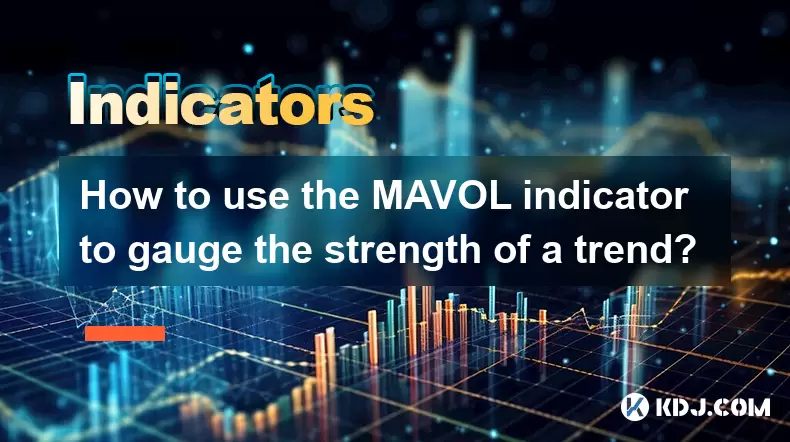
How to use the MAVOL indicator to gauge the strength of a trend?
Jul 31,2025 at 09:57pm
Understanding the MAVOL Indicator in Cryptocurrency TradingThe MAVOL indicator, short for Moving Average of Volume, is a technical analysis tool widel...
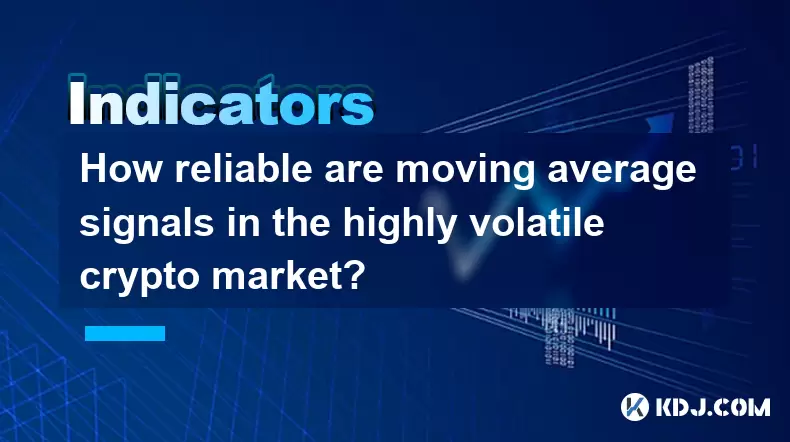
How reliable are moving average signals in the highly volatile crypto market?
Jul 31,2025 at 08:36pm
Understanding Moving Averages in Cryptocurrency TradingMoving averages (MAs) are among the most widely used technical indicators in the cryptocurrency...
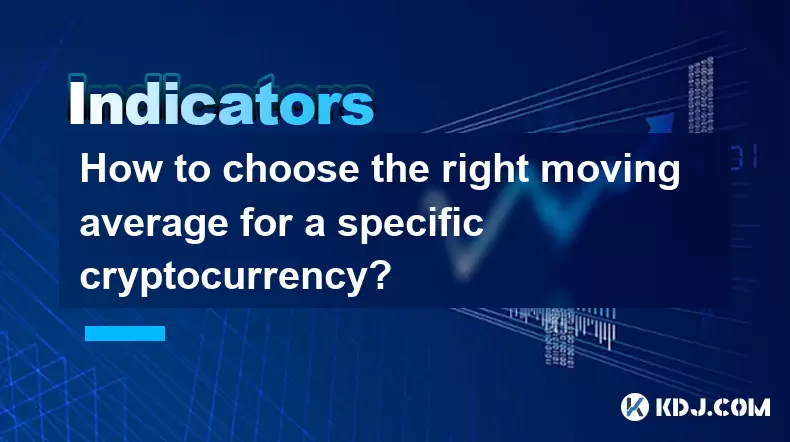
How to choose the right moving average for a specific cryptocurrency?
Jul 31,2025 at 10:29pm
Understanding the Role of Moving Averages in Cryptocurrency TradingMoving averages are foundational tools in technical analysis, widely used by crypto...
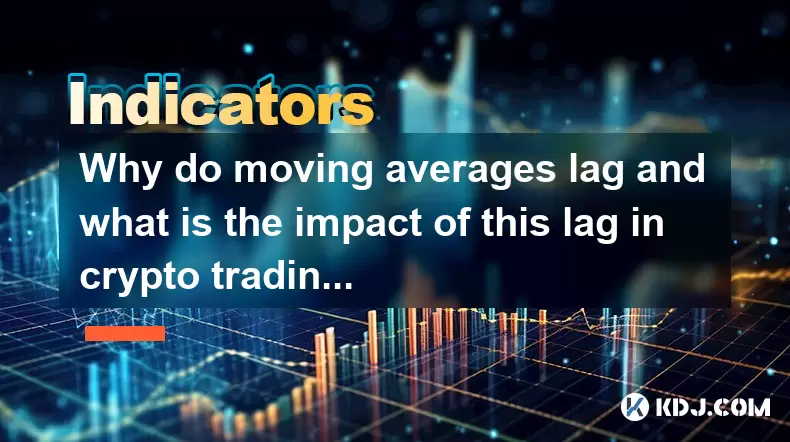
Why do moving averages lag and what is the impact of this lag in crypto trading?
Jul 31,2025 at 08:07pm
Understanding the Concept of Moving Averages in Crypto TradingMoving averages are among the most widely used technical indicators in cryptocurrency tr...
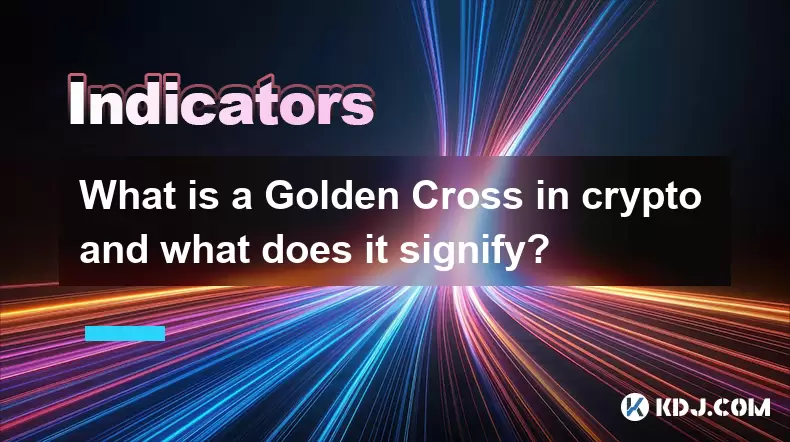
What is a Golden Cross in crypto and what does it signify?
Jul 31,2025 at 10:36pm
Understanding the Golden Cross in Cryptocurrency MarketsThe Golden Cross is a technical analysis pattern widely observed in cryptocurrency trading. It...

How can you use the MACD histogram to determine trend strength?
Jul 31,2025 at 11:10pm
Understanding the MACD Histogram and Its ComponentsThe MACD (Moving Average Convergence Divergence) histogram is a visual representation of the differ...

How to use the MAVOL indicator to gauge the strength of a trend?
Jul 31,2025 at 09:57pm
Understanding the MAVOL Indicator in Cryptocurrency TradingThe MAVOL indicator, short for Moving Average of Volume, is a technical analysis tool widel...

How reliable are moving average signals in the highly volatile crypto market?
Jul 31,2025 at 08:36pm
Understanding Moving Averages in Cryptocurrency TradingMoving averages (MAs) are among the most widely used technical indicators in the cryptocurrency...

How to choose the right moving average for a specific cryptocurrency?
Jul 31,2025 at 10:29pm
Understanding the Role of Moving Averages in Cryptocurrency TradingMoving averages are foundational tools in technical analysis, widely used by crypto...

Why do moving averages lag and what is the impact of this lag in crypto trading?
Jul 31,2025 at 08:07pm
Understanding the Concept of Moving Averages in Crypto TradingMoving averages are among the most widely used technical indicators in cryptocurrency tr...

What is a Golden Cross in crypto and what does it signify?
Jul 31,2025 at 10:36pm
Understanding the Golden Cross in Cryptocurrency MarketsThe Golden Cross is a technical analysis pattern widely observed in cryptocurrency trading. It...
See all articles

























































































